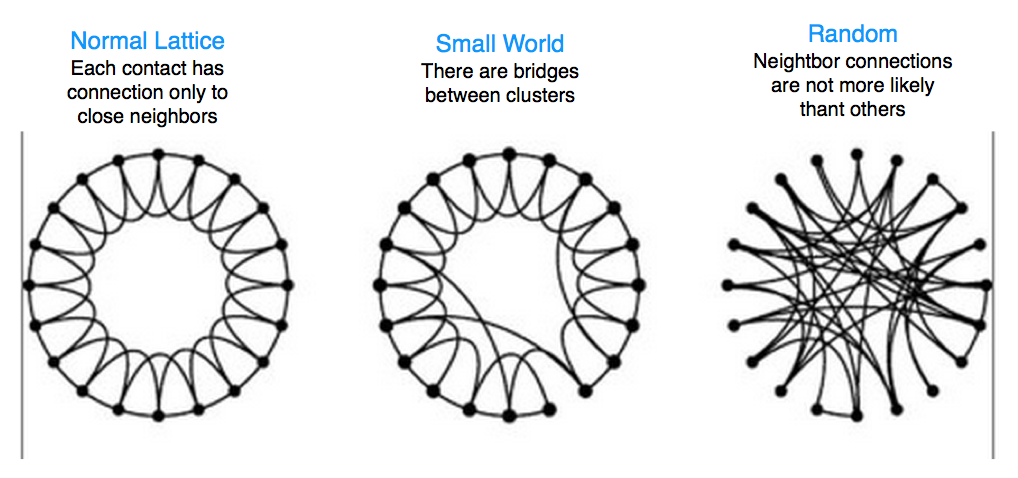This is a very small world
and so is CIAT world
 A comment posted by Antonio Seco in a previous blog invited us to remember the six degrees of separation theory, showing that the world is small and that everyone on the planet could connect anyone through friends of friends in a surprisingly small number of steps.
A comment posted by Antonio Seco in a previous blog invited us to remember the six degrees of separation theory, showing that the world is small and that everyone on the planet could connect anyone through friends of friends in a surprisingly small number of steps.
In the “Small world experiment”, published in 1969 by Stanley Milgram, residents in Omaha, Nebraska had to send a message to unknown residents in Boston, Massachusetts. The basic rule was that they should only send it to someone they know personally, who in turn will do the same. At that time, there were no social networks as we know them today, and mails were not electronic. The result was that the message transmission on average was taking only six steps. Today, articles on internet indicate that thanks to the social networks as we know them, and even though the world is more populated than 50 years ago, the number of steps required for the same process is reduced.
The small world phenomena in heavy populated areas, connected by various inter-regional links, have other implications. One is that the first steps are usually very large. If we must find someone we do not know in a distant city, we try to contact someone we know in that city or near that city. These leaps are like “shortcuts ” that avoid us to walk door to door , neighbor to neighbor, friend to friend, and allow us to jump over a couple of countries and a couple of jobs . These shortcuts are not static, some disappear but several are added in each collaboration, each seminar, sometimes even at a party or social event.
The communities structured in “small world models”, densely connected in local workspaces with several “bridges” or shortcuts between distant blocks probably better develop innovative practices, as a result of trust and collaboration values. Diverse and long-distance connections should bring fresh ideas, not repetitive or redundant. In fact, the geography and the short or long distances listed here are only one dimension. Other dimensions may be, to name only two, the workplace or the areas of interest. So a colleague who worked in company A and now works in a tax administration is a bridge between these communities. People who work in collections, or audit, tax information, customs valuation or transfer pricing can be the densely connected blocks and those “bilingual ” who understand this and that , are the shortcut bridges between different blocks.
I wonder if the world of tax administrators follows the small world model. In my opinion, the answer is yes. This is particularly important when thinking about the role that CIAT should have in facilitating these characteristics of small worlds governed by collaboration and innovation and where best practices can spread quickly. But at the same time they provide diversity, make sure that ideas and general principles are rapidly disseminated, but that the issue of the application of these concepts to a particular situation can and must respect local realities.

The CIAT increasingly develops these opportunities. I am not referring to their presence on LinkedIn, Facebook or Twitter , but also with the development of events such as the General Assembly and the Technical Conference , seminars , permanent working groups , networks of studies, intelligence , transfer pricing , tax intelligence and electronic invoicing ; training activities; the cooperation with ITD and with the IDB , the World Bank , CAPTAC- DR, the European Commission, Eurosocial , IMF, German GIZ and ITC , the IBFD , the IEF of Spain , the ESAF in Brazil, the OECD, and the United Nations; the cooperation and exchange programs with ATAF , CATA , COTA , CREDAF , ENCAT , CEATS , SGATAR , ECLAC, ICEFI , the technical assistance projects . This way, in my opinion, we help the world of tax administrations to be smaller but diverse and innovative.
If any of our readers is a mathematician, or a film actor, he or she may already be familiar with the concept of the small world and know exactly what the Erdös number is or how many degrees separate us from Kevin Bacon. For the others, here is perhaps the challenge: how many degrees separate you from a tax administration official in your city, in another country, on another continent? And we could call this –why not – CIAT degree of separation.
Greetings and good luck
1,444 total views, 1 views today
